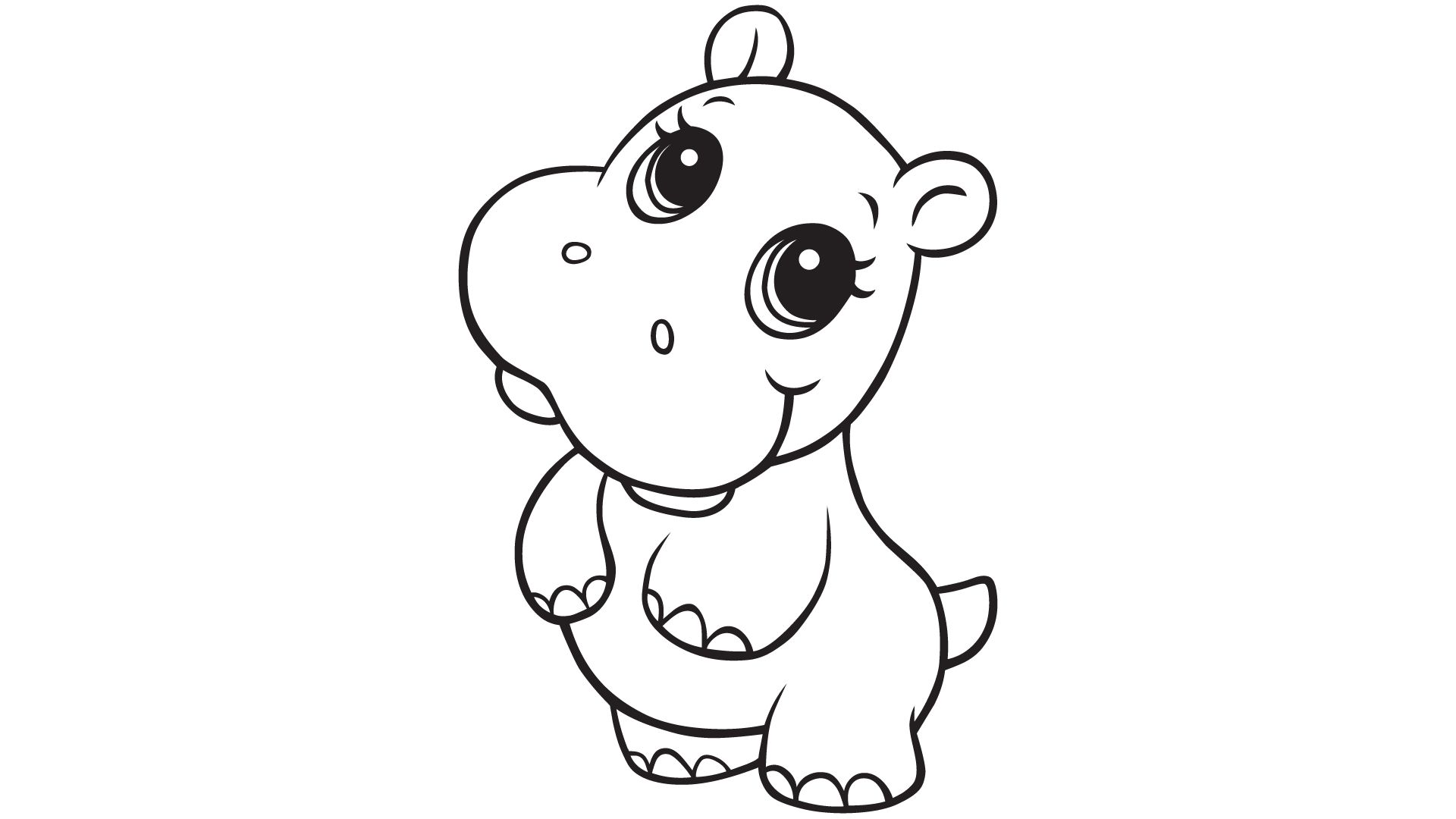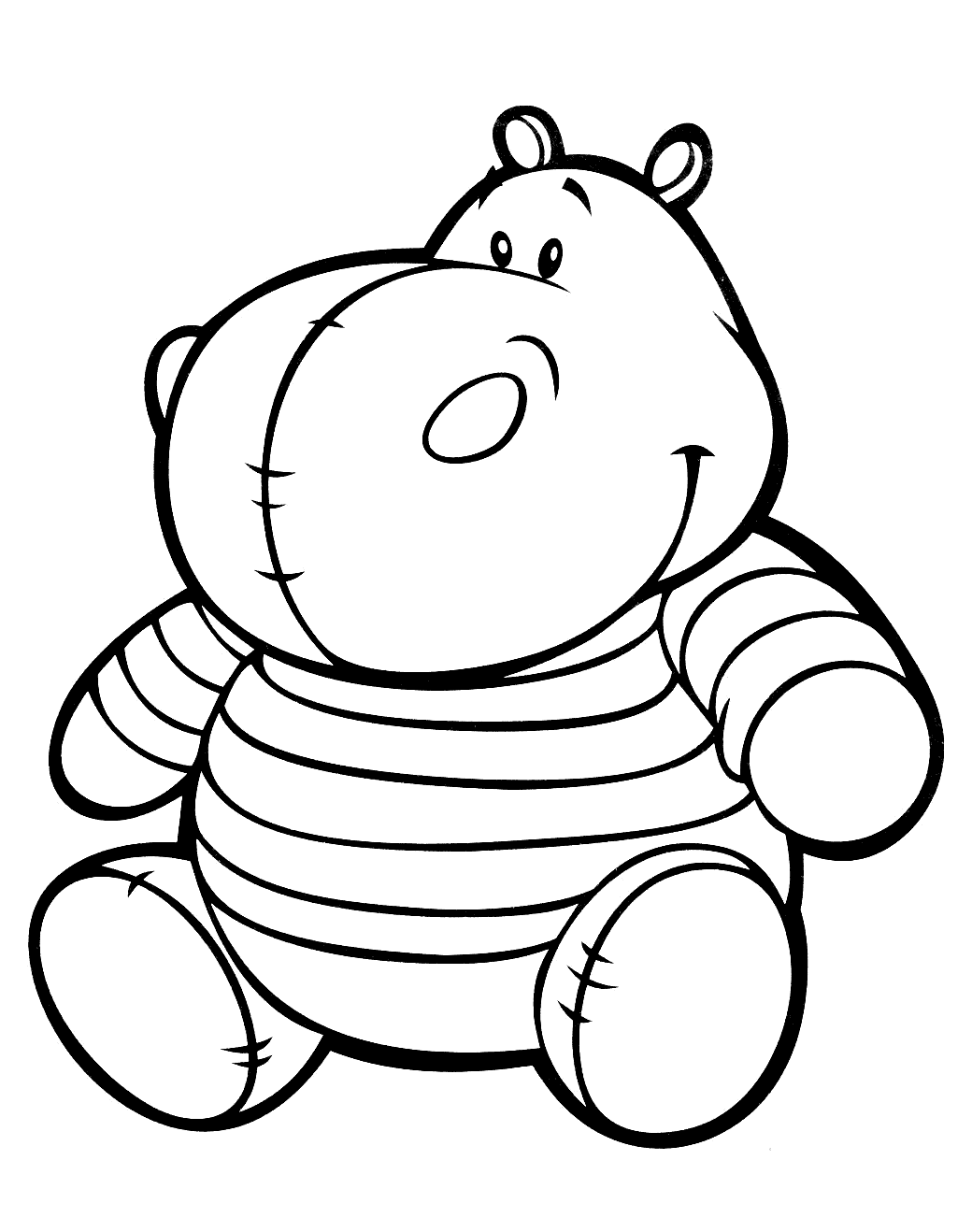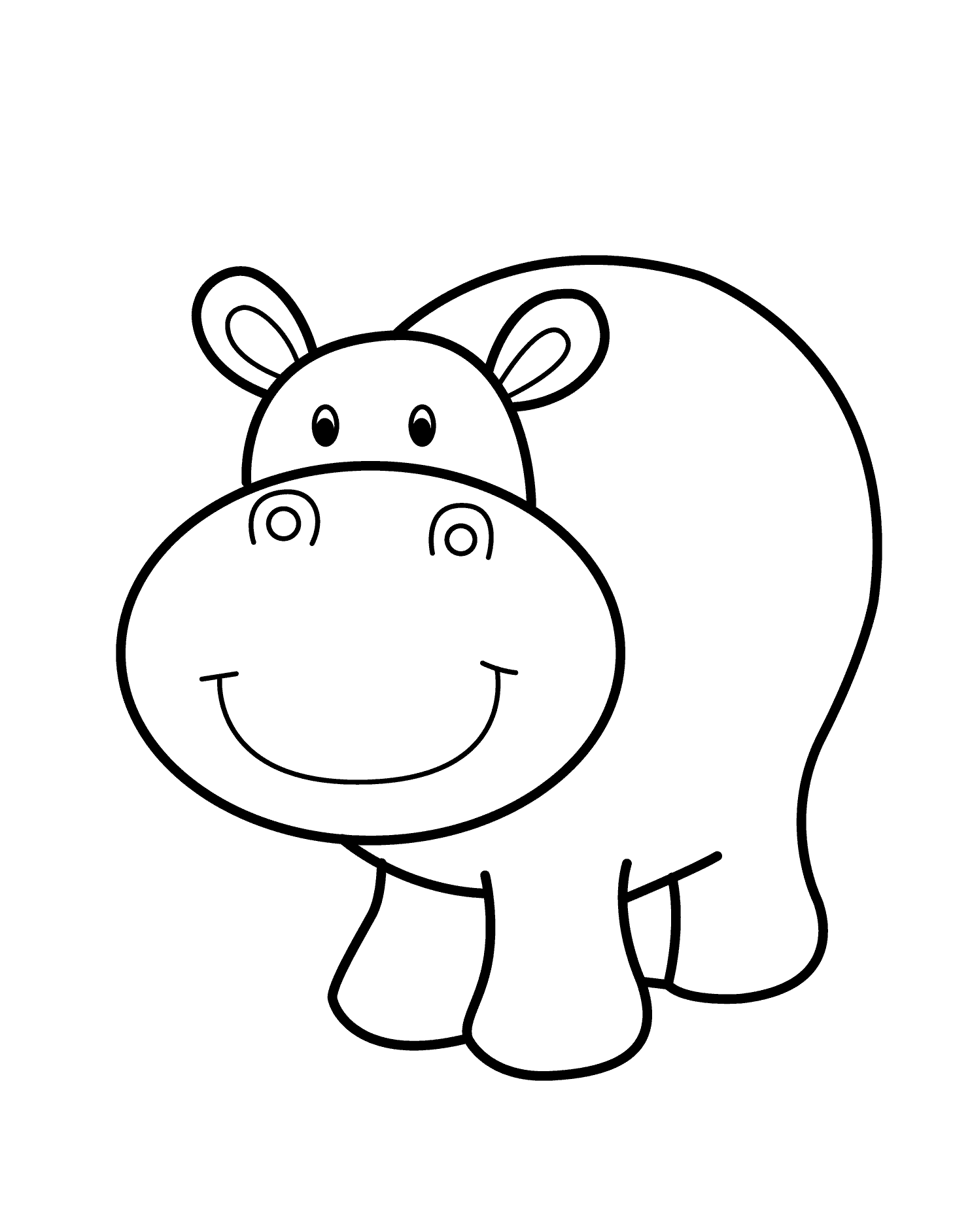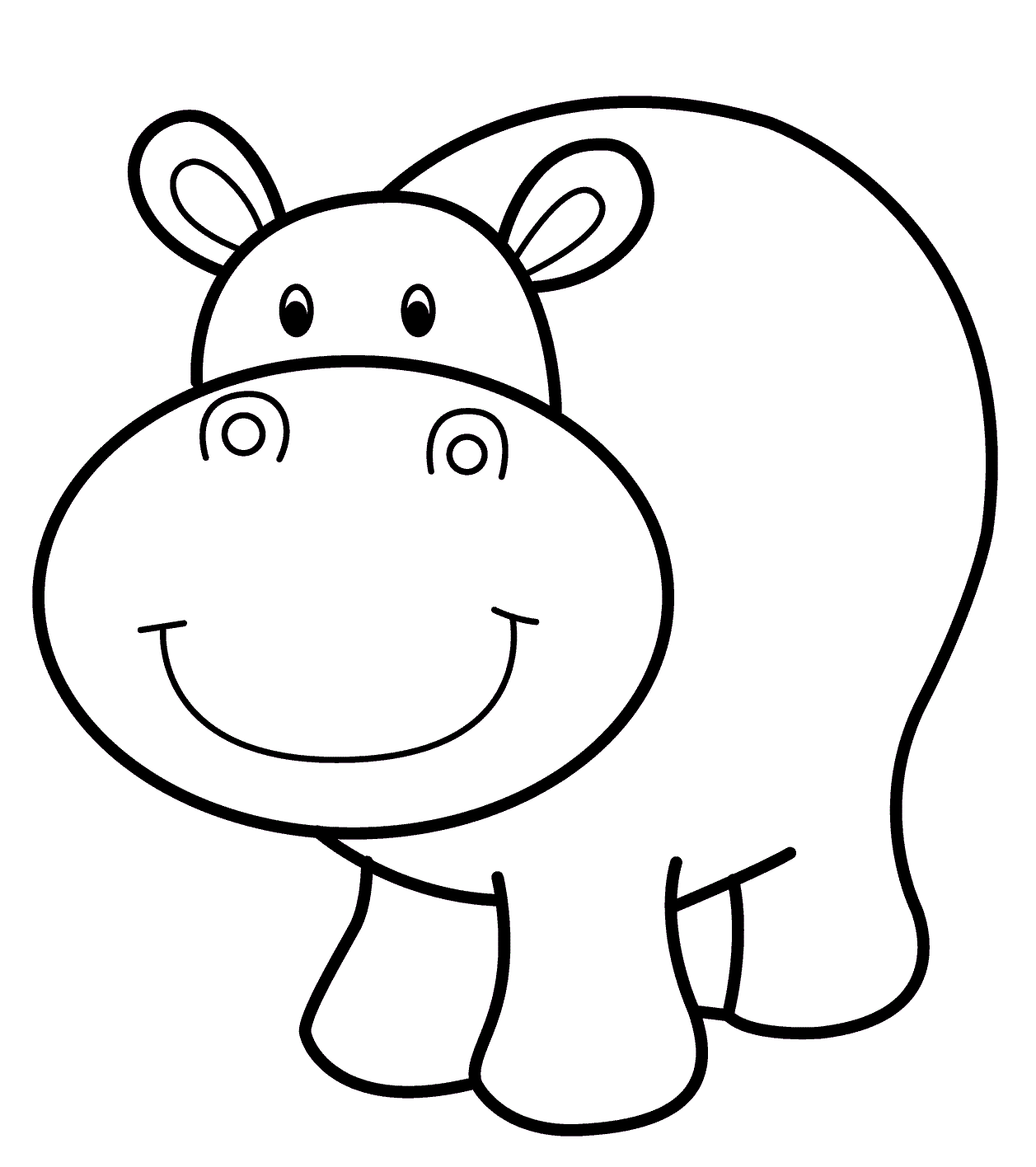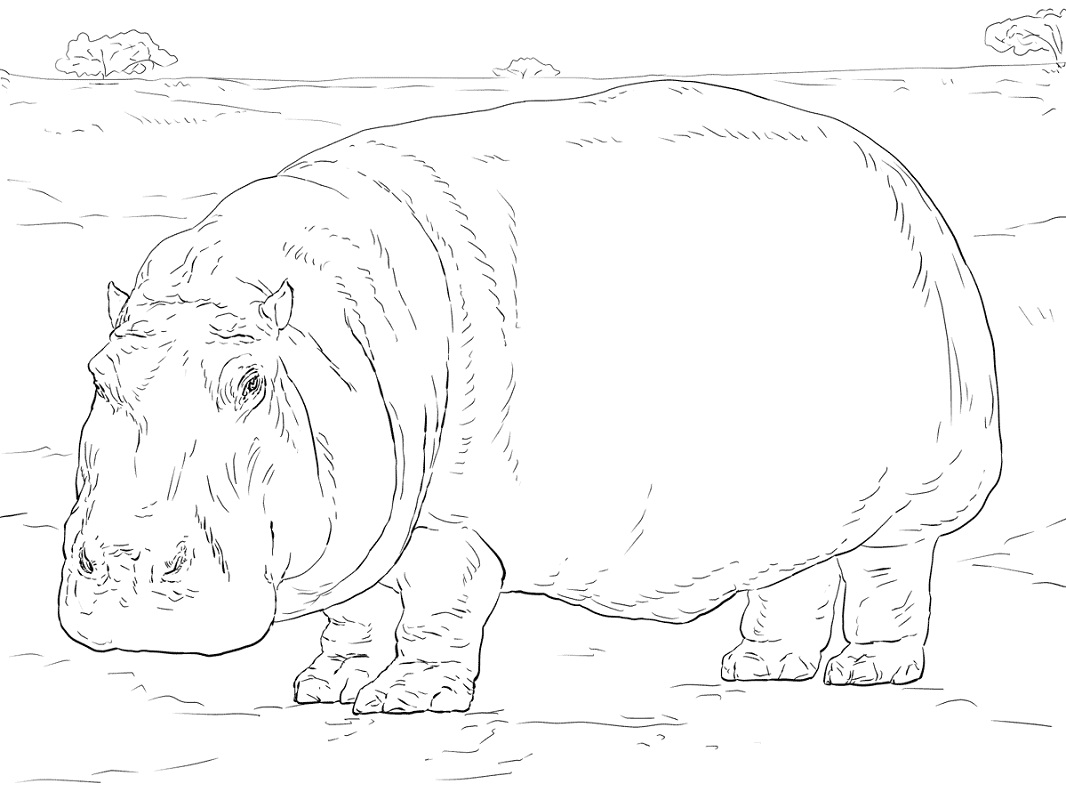Hippos are aquatic animals, so they have particular adaptations specific to life in water. Now, you can get these animals in the following Hippo Coloring Pages below.
The eyes, ears, and nostrils are all positioned at the same level so they can remain almost entirely submerged without having to surface to breathe.
Printable Hippo Coloring Pages
The body is very bulky. An adult male specimen, more significant than the female, can weigh up to 3000 kg. The size of this giant animal is genuinely remarkable.
The overall length can exceed four meters, of which less than half a meter belongs to the tail. The maximum height is about one and a half meters, while the weight is about three tons.
The trunk of the hippopotamus is quite long but remarkably massive, supported by reasonably short legs that end with four fingers of equal size; the hooves look more like nails. To swim, the hippopotamus uses its paws.
On the other hand, the shape of the snout is very particular: it narrows right after the eyes and then widens towards the end. The eyes are pretty small, and so are the ears, but the latter has the characteristic of rotating with exceptional rapidity.
The dentition is robust, and the lower canines are mainly developed, real precious fangs famous for their ivory. Adults have from 36 to 40 teeth, as the incisors can vary from 4 to 6.
The canines are continuously growing and can reach 50 centimeters in length for 3 kilograms of weight in the male and one kilogram in the female.
Another valuable characteristic is the leather, its robust skin, almost completely hairless, and its color is brown with violet shades.
The hippo lives in herds like the giraffe, but he, in lakes and rivers, is an excellent swimmer, able to withstand a long time underwater in immersion, thanks to the exceptional capacity of his lungs.
Once quite widespread, now its presence has been reduced. It lives in Swaziland, in the South African Republic up to the lagoon of Saint Lucia, particularly in Uganda, Kenya, Tanzania, Mozambique, and Zambia.
In the Nile area, we can still find some specimens very threatened by man. It lives near places with water basins, and its existence is fundamental for the ecosystem.
Females give birth after about eight months and give birth to a single cub, which is always born during the rainy season.
The hippo gives birth to its young in shallow water or even on land, in an area well sheltered from enemies where it remains isolated for about ten days before joining the group.
The baby hippopotamus learns to swim before it can walk. The growth is rapid: at birth, the weight is about 30-50 kilograms, at one year, it is 250 kilograms.
The hippopotamus feed leaves its habitat of water to move on land. This happens mainly during the night and consumes large amounts of vegetables.
The grass cutting is so precise that it seems sheared. This characteristic prevents the development of fires. It mostly devours plants, but its diet consists of about ten different grasses, depending on the location.
The hippopotamus eats little in proportion to its body weight, the daily ratio of food is 40 kilograms of fresh grass, but during the dry season, this mammal is also capable of fasting for a long time.
The digestion is long and may last even 24 hours, even during the many hours of rest, facilitating a sort of food stock.

